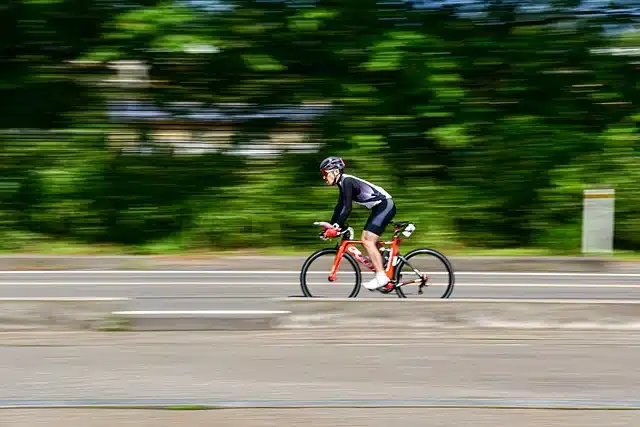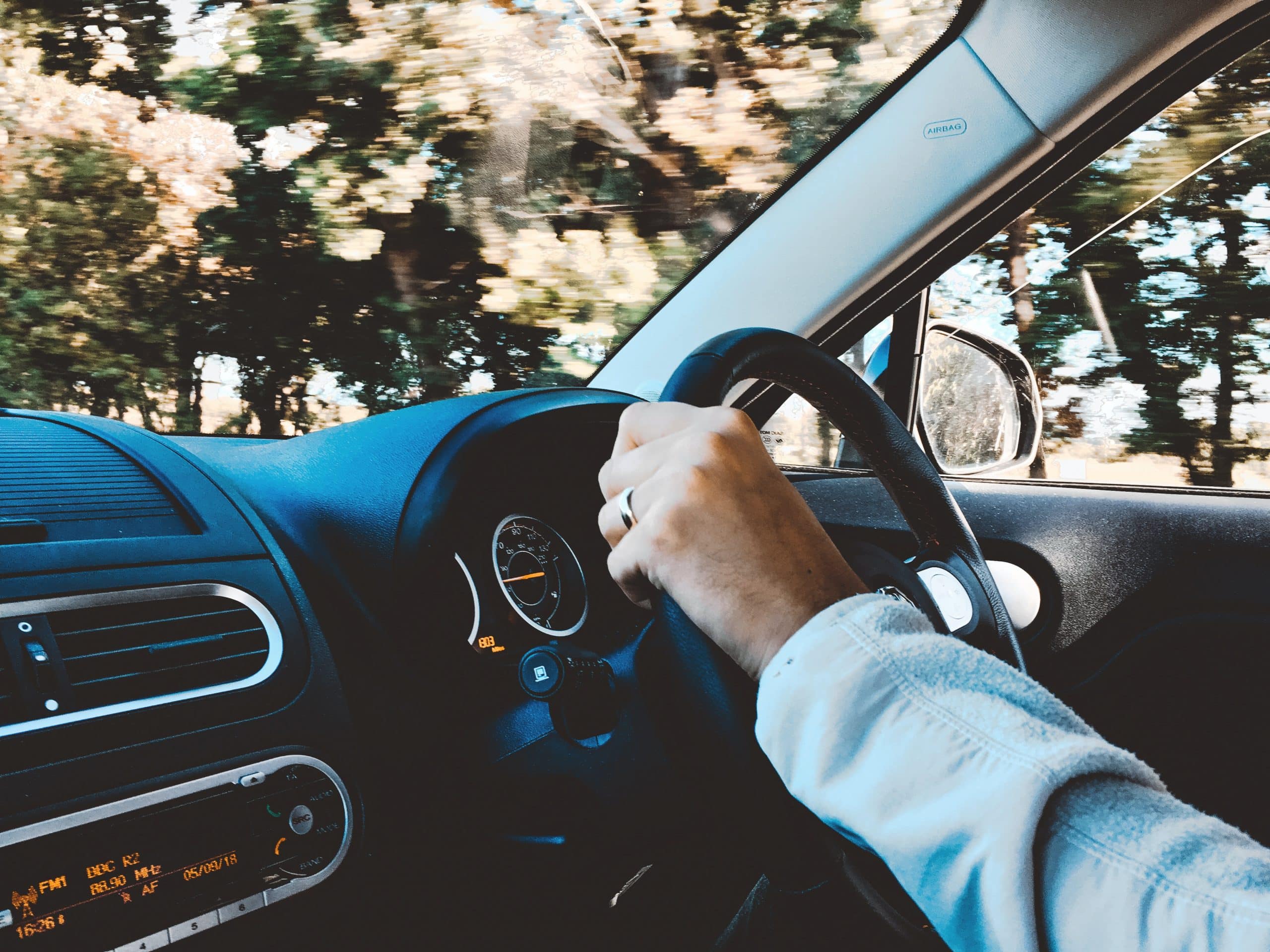
What is the importance of understanding cyclists on the road?
Understanding cyclists on the road is of utmost importance for learner drivers as it plays a crucial role in ensuring the safety of all road users. By understanding cyclists, learner drivers can anticipate their movements and be aware of their presence on the road. This awareness can help reduce the number of accidents and injuries caused by collisions between cars and cyclists.
Importance of Understanding Cyclists for Learner Drivers
Learner drivers need to understand cyclists for several reasons:
- Awareness of Vulnerability: Cyclists are more vulnerable than cars and can be easily overlooked by drivers. Learner drivers need to be aware of this vulnerability and give cyclists plenty of room when passing. Understanding cyclists helps learner drivers to be more cautious and considerate towards them.
- Anticipating Movements: Cyclists have different manoeuvring capabilities compared to cars. They can change lanes, turn, or stop abruptly. By understanding cyclists, learner drivers can anticipate their movements and adjust their driving accordingly, reducing the risk of collisions.
- Compliance with Highway Code: The Highway Code encourages cyclists to move to the centre of the road when they feel it is safer to do so. Learner drivers need to be aware of this provision and understand why cyclists might adopt this position. Understanding cyclists helps learner drivers to navigate road situations in accordance with the Highway Code.
How Understanding Cyclists Improves Road Safety
Understanding cyclists can significantly improve road safety by:
- Increased Awareness: When learner drivers understand cyclists, they become more aware of their presence on the road. This heightened awareness reduces the chances of overlooking cyclists and helps prevent accidents.
- Giving Adequate Space: Learner drivers who understand cyclists are more likely to give them enough space when passing. This ensures that cyclists have sufficient room to manoeuvre and reduces the risk of collisions caused by close proximity.
- Preventing Intersection Accidents: Learner drivers who understand cyclists are more cautious when approaching junctions. They take extra care to look out for cyclists and give them the right of way, reducing the likelihood of accidents at intersections.
Potential Risks and Consequences of Not Understanding Cyclists
Not understanding cyclists can lead to various risks and consequences, including:
- Increased Collisions: If learner drivers are not aware of cyclists and their movements, they are more likely to collide with them. This can result in injuries or even fatalities for both the cyclist and the driver.
- Violation of Traffic Laws: Not understanding cyclists may lead to learner drivers inadvertently violating traffic laws. For example, cutting across cyclists when turning or not giving them the right of way at junctions can result in legal consequences and compromise road safety.
- Negative Perception of Drivers: Failure to understand cyclists can contribute to negative perceptions of drivers among cyclists. This can lead to animosity and a breakdown in mutual respect between different road users, further compromising road safety.
In conclusion, understanding cyclists on the road is crucial for learner drivers to ensure the safety of all road users. It helps learner drivers anticipate cyclists’ movements, comply with traffic laws, and give them adequate space. Failing to understand cyclists can lead to increased collisions, violations of traffic laws, and a negative perception of drivers. Therefore, it is essential for learner drivers to prioritise understanding and respecting cyclists to improve road safety.
What are the different types of cyclists and their characteristics?
The different types of cyclists are recreational cyclists, commuters, and professional cyclists. Each type of cyclist has its own unique characteristics and interacts with other road users in different ways.
Recreational Cyclists
Recreational cyclists ride for leisure and enjoyment. They may ride for fitness, to explore the outdoors, or simply for fun. Recreational cyclists typically ride on roads, trails, and paths that are not heavily trafficked. They may also ride in groups or alone.
- Characteristics: Recreational cyclists ride at a slower pace compared to commuters and professional cyclists. They may take more breaks and stops along the way. They often ride on trails, roads, or paths away from traffic.
Commuters
Commuters are cyclists who ride for transportation purposes. They typically ride on roads and paths that are shared with other vehicles. Commuters may ride to work, school, or other destinations.
- Characteristics: Commuters ride at a faster pace compared to recreational cyclists. They may take fewer breaks and stops along the way. They often ride on roads and paths that are heavily trafficked.
Professional Cyclists
Professional cyclists ride for competition or sport. They typically ride on roads and paths that are shared with other vehicles. Professional cyclists may participate in races, time trials, or other competitive events.
- Characteristics: Professional cyclists have a higher level of fitness and skill compared to recreational or commuter cyclists. They often have specialised equipment and clothing. They ride at a fast pace and may ride in groups or alone. They typically ride on heavily trafficked roads and paths.
Interaction with Other Road Users
All cyclists should be aware of and considerate of other road users.
- Recreational cyclists should be aware of and considerate of pedestrians, horse riders, and horse-drawn vehicles. They should be courteous and share the road or path with other users.
- Commuters should be aware of and considerate of other vehicles, pedestrians, and cyclists. They should follow traffic rules and use bike lanes or other dedicated bike paths when available.
- Professional cyclists should also be aware of and considerate of other vehicles, pedestrians, and cyclists. They should ride in a predictable manner and communicate their intentions to other road users. They may ride in groups and use bike lanes or other dedicated bike paths.
Overall, the differences between recreational cyclists and commuters lie in their purpose and riding conditions. Recreational cyclists ride for leisure and enjoyment, often on less trafficked roads or paths, at a slower pace, and with more breaks. Commuters, on the other hand, ride for transportation purposes, often on heavily trafficked roads or paths, at a faster pace, and with fewer breaks. Professional cyclists, as the name suggests, ride for competition or sport, have a higher level of fitness and skill, and often ride on heavily trafficked roads or paths. All types of cyclists should be aware of and considerate of other road users, but the specific interactions may vary depending on the type of cyclist and the road conditions.
What are the common challenges faced by cyclists on the road?
Main Obstacles and Hazards
Cyclists on the road face a variety of obstacles and hazards that can pose risks to their safety. Some of the main obstacles and hazards that cyclists encounter include:
- Poor road surfaces: Potholes, gravel, and other debris on the road can make cycling difficult and dangerous. These obstacles can cause cyclists to lose control of their bikes and potentially lead to accidents.
- Parked vehicles: Parked cars can be a significant hazard for cyclists. They can open their doors unexpectedly, causing cyclists to swerve into traffic to avoid a collision. It is crucial for cyclists to be aware of parked cars and maintain a safe distance from them.
- Traffic: Heavy traffic can make it challenging for cyclists to manoeuvre on the road. The presence of other vehicles, including cars, buses, and trucks, increases the risk of accidents. Cyclists need to be cautious and anticipate the movements of other vehicles to ensure their safety.
- Weather conditions: Adverse weather conditions such as rain, snow, and strong winds can make cycling more difficult and dangerous. Reduced visibility, slippery road surfaces, and gusts of wind can increase the risk of accidents for cyclists. It is essential for cyclists to adjust their riding style and take extra precautions in such conditions.
- Poor visibility: Limited visibility can be a significant challenge for cyclists. Factors such as poor lighting, blind spots, and other visibility issues can make it difficult for drivers to see cyclists on the road. This increases the risk of accidents, especially at junctions and when turning.
How Learner Drivers Can Be More Aware
Learner drivers can play a crucial role in ensuring the safety of cyclists on the road by being more aware of the challenges they face. Here are some ways learner drivers can increase their awareness:
- Be attentive: Learner drivers should be aware of their surroundings and actively look out for cyclists on the road. They should constantly scan their environment, especially when approaching junctions, traffic lights, and areas with high cyclist activity.
- Give cyclists plenty of space: Learner drivers should maintain a safe distance when driving alongside cyclists. It is recommended to provide at least 1.5 metres (or 5 feet) of space between the vehicle and the cyclist. This allows cyclists to have enough room to manoeuvre and reduces the risk of collisions.
- Be cautious at junctions: Learner drivers should exercise extra caution at junctions, as these are critical areas where conflicts between vehicles and cyclists can occur. They should check for cyclists before emerging from junctions and be prepared to yield to them when necessary.
- Use mirrors effectively: Learner drivers should make proper use of their mirrors to check for cyclists before making any manoeuvres or changing lanes. This helps to ensure that they are aware of the presence of cyclists and can take appropriate actions to avoid accidents.
Best practices for Sharing the Road
When sharing the road with cyclists, learner drivers should follow these best practices to promote safety and minimise risks:
- Obey traffic laws: Learner drivers should adhere to all traffic signs, signals, and regulations. This includes respecting speed limits, stopping at red lights, and yielding to pedestrians and cyclists when required.
- Park responsibly: When parking their vehicles, learner drivers should choose conspicuous locations where cyclists can easily see their parked vehicles. This helps to prevent unexpected collisions or accidents when cyclists are passing by.
- Allow safe overtaking: Learner drivers should allow cyclists to overtake them when it is safe to do so. This means maintaining a steady speed and not impeding the progress of cyclists. Learner drivers should be patient and avoid tailgating or putting pressure on cyclists.
By being aware of the challenges faced by cyclists, learner drivers can contribute to creating a safer road environment for everyone. It is essential for learner drivers to continuously educate themselves about the specific laws and regulations that apply to cyclists in their region to ensure compliance and promote harmonious sharing of the road.
What are the legal requirements and rules for drivers when interacting with cyclists?
The Highway Code states that drivers have certain responsibilities towards cyclists. They must give cyclists at least 1.5 metres of space when overtaking them. This is to ensure the safety of the cyclists and prevent any accidents or collisions. Additionally, drivers must not cut across cyclists or horse riders who are going straight ahead when turning into or out of a junction, changing direction or lane. This is to avoid “left hook” collisions where the driver’s vehicle cuts across the path of the cyclist or horse rider. Drivers must also give cyclists priority at roundabouts, allowing them to proceed safely.
In addition to the general responsibilities towards cyclists, there are specific rules and regulations for drivers in the UK. These include:
- Giving cyclists at least as much room as they would give a car when overtaking. This ensures that there is enough space for the cyclist to manoeuvre safely.
- Not driving too close to cyclists, as this can cause them to lose balance and fall off their bike. It is important to maintain a safe distance to avoid any accidents.
- Not overtaking cyclists if they are indicating to turn left or right. This is to prevent any conflicts or collisions when the cyclist is about to make a turn.
- Not driving in cycle lanes, unless it is necessary to do so in order to turn left or right. Cycle lanes are designated for cyclists and drivers should not obstruct them.
- Not parking in cycle lanes. This is to ensure that cyclists have a clear and safe path to travel.
- Not driving in bus lanes during restricted times. Bus lanes are designated for buses, cyclists, and taxis during certain times and drivers should not enter them during those times.
- Not driving in pedestrianised areas, unless it is necessary to do so in order to turn left or right. pedestrianised areas are meant for pedestrians and drivers should avoid entering them unless it is necessary for a turn.
For learner drivers, it is important to ensure they are following the correct procedures when encountering cyclists. They can do this by familiarising themselves with the Highway Code and the rules and regulations for drivers in the UK. It is important for learner drivers to be cautious and give cyclists the right of way when necessary. By following these guidelines, learner drivers can ensure they are interacting with cyclists in a safe and responsible manner.
How can learner drivers improve their awareness and understanding of cyclists?
Learner drivers can improve their awareness and understanding of cyclists by utilising a variety of resources and training materials. The recommended resources and training materials for learner drivers include:
- The UK government’s THINK! website provides a range of resources and advice for learner drivers on how to share the road with cyclists.
- The Bikeability website offers a variety of cycling courses and resources specifically designed for learner drivers.
- The Cycling UK website provides a range of cycling courses and resources for learner drivers.
- The Royal Society for the Prevention of Accidents (RoSPA) website also offers a range of cycling courses and resources for learner drivers.
These resources can provide valuable information on the rules of the road and how to safely interact with cyclists.
To practice sharing the road with cyclists, learner drivers can follow a few simple steps:
- Be aware of cyclists at all times. Pay attention to your surroundings and actively look out for cyclists on the road.
- Give cyclists plenty of room. When passing a cyclist, leave a safe distance between your vehicle and the cyclist to ensure their safety.
- Be cautious at junctions. Cyclists may be approaching from different directions, so it is important to be extra careful and give them the right of way when necessary.
Additionally, learner drivers can enhance their understanding of cyclists by driving in areas with bike lanes or paths. This will help them become more familiar with the rules of the road and how to safely interact with cyclists in real-world scenarios.
Taking additional cycling awareness courses can provide several benefits for learner drivers. These courses can help improve their knowledge of the rules and regulations related to cycling, as well as increase their understanding of the challenges faced by cyclists on the road. By gaining this knowledge and awareness, learner drivers can become more confident and competent in sharing the road with cyclists, ultimately enhancing road safety for all users.
What are the potential risks and consequences of not understanding and respecting cyclists?
The potential risks and consequences of not understanding and respecting cyclists on the road can be significant. Statistics from the Department for Transport in the UK show that in 2019, there were 19,541 reported casualties of cyclists, with 102 of them being fatalities. Although there was a decrease of 4% in overall casualties compared to the previous year, the number of fatalities increased by 4%.
Accidents involving cyclists often occur due to collisions with motor vehicles. In 2019, there were 11,844 reported casualties in road traffic accidents involving cyclists and motor vehicles, with 75 of them being fatal. These accidents can result in life-changing injuries or even death for cyclists.
Not understanding and respecting cyclists on the road can have legal and ethical implications. Drivers who fail to give cyclists priority or leave enough space when overtaking can be held legally responsible for any accidents or injuries that occur as a result of their negligence. Additionally, not respecting cyclists can lead to serious harm or even loss of life, which has significant ethical implications.
In conclusion, understanding and respecting cyclists on the road is crucial for the safety of both cyclists and drivers. Learner drivers can contribute to reducing the risks by following the guidelines, being aware of cyclists, and giving them enough space and priority. The legal and ethical implications of not respecting cyclists are substantial, as it can lead to accidents, injuries, and loss of life.
Contact Us: How can learner drivers get in touch with Smart Drive UK for more information or to enrol in cyclist awareness training?
Contact Details
Learner drivers can get in touch with Smart Drive UK for more information and training on how to deal with cyclist awareness. Contact details:
- Phone: 01903 691002
- Email: admin@smartdriveuk.co.uk
- Website: www.smartdriveuk.co.uk




